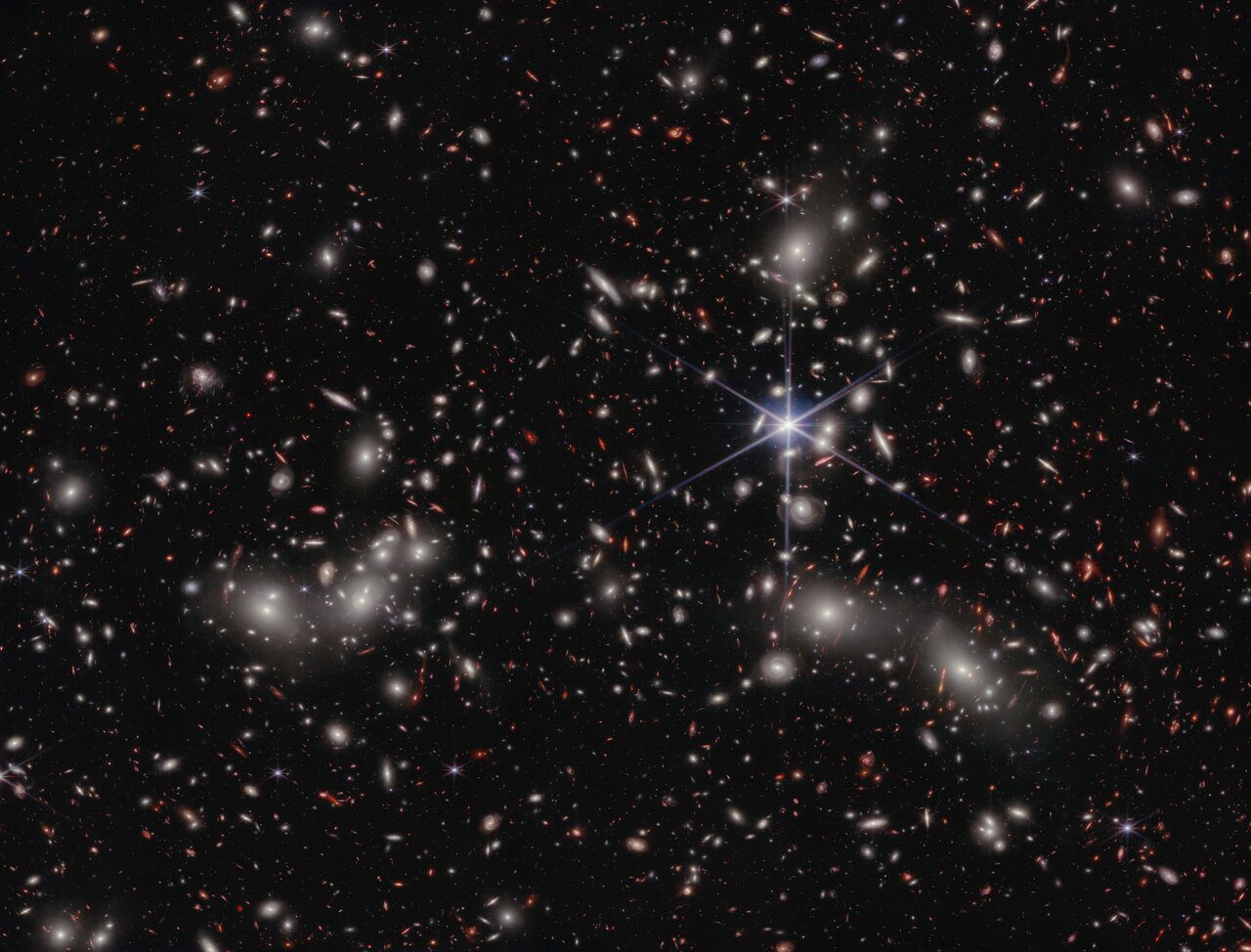Astronomers have released the latest JWST deep field image showing three massive clusters of galaxies on their way to forming a “mega cluster”, and never-before-seen details of the region of space known as Pandora’s Cluster (no opening of boxes, thankfully though).
Thanks to the massive combined matter of the galaxy clusters, which produces a phenomenon known as gravitational lensing, the light of distant galaxies behind them but not in the line of sight can be seen. Using JWST’s powerful infrared instruments, which can see through dust and gas in a way Hubble cannot, new details of Pandora’s Cluster have been captured that can now be studied in detail.
More formally known as Abell 2744, Pandora’s Cluster is a giant galaxy cluster located 3.5 billion light-years away, the result of a pile-up of at least four smaller galaxy clusters that took place over a span of 350 million years.
By combining JWST’s infrared views of this region of space with the many lensing areas caused by the smaller galaxy clusters, astronomers have created a deep field image that presents the vastness of space in a single image. Of course, it isn’t a single snapshot taken by the telescope; it’s made up of four images stitched together to create one panorama that features an incredible 50,000 sources of infrared light.

There are 50,000 infrared sources of light captured in this spectacular image. Image credit: NASA, ESA, CSA, I. Labbe (Swinburne University of Technology), R. Bezanson (University of Pittsburgh), A. Pagan (STScI)
In Greek mythology, Pandora was the first mortal woman whose curiosity got the better of her and opened a container that released all the evils into the world (except hope of course, which she manages to trap inside). Hopefully, JWST hasn’t released anything unsavory while peering into the region. Hubble has imaged its core before but as Hubble sees in visible light, which can’t travel easily through cosmic gas and dust, and JWST sees in infrared, which can pass through much more easily, JWST is capable of penetrating deeper into the cosmos than other telescopes.
The image was created from over 30 hours of observations by JWST’s NIRCam instrument and exposures lasting 4 to 6 hours. That bright six-point star in the foreground is a real star in the Milky Way but as always, the tell-tale diffraction spikes are caused by how light interacts with JWST’s optical systems.
In the lower right corner of the image are hundreds of strongly lensed distant galaxies that appear as arcs of light. These galaxies have never been seen before, even by Hubble.
Gravity can create some extreme and interesting visual effects. According to Einstein’s general theory of relativity, massive celestial objects have such strong gravitational fields that they actually warp spacetime around them, causing any light traveling through space to curve around them too. The gravitational field distorts and magnifies light traveling from distant objects that we wouldn’t be able to see otherwise. This amplification, combined with JWST’s infrared superpowers, allows us to see distant galaxies that just lensing on its own wouldn’t allow us to see.
This means that this new deep field will allow astronomers to study this region of space like never before. The new observations are being analyzed now and when released this summer, the data will provide new measurements of distances within the cluster and details about the composition of the galaxies involved, and perhaps even how galaxies formed in the early universe.
Source Link: JWST Reveals Never-Before-Seen Details In Incredible New Deep Field Image